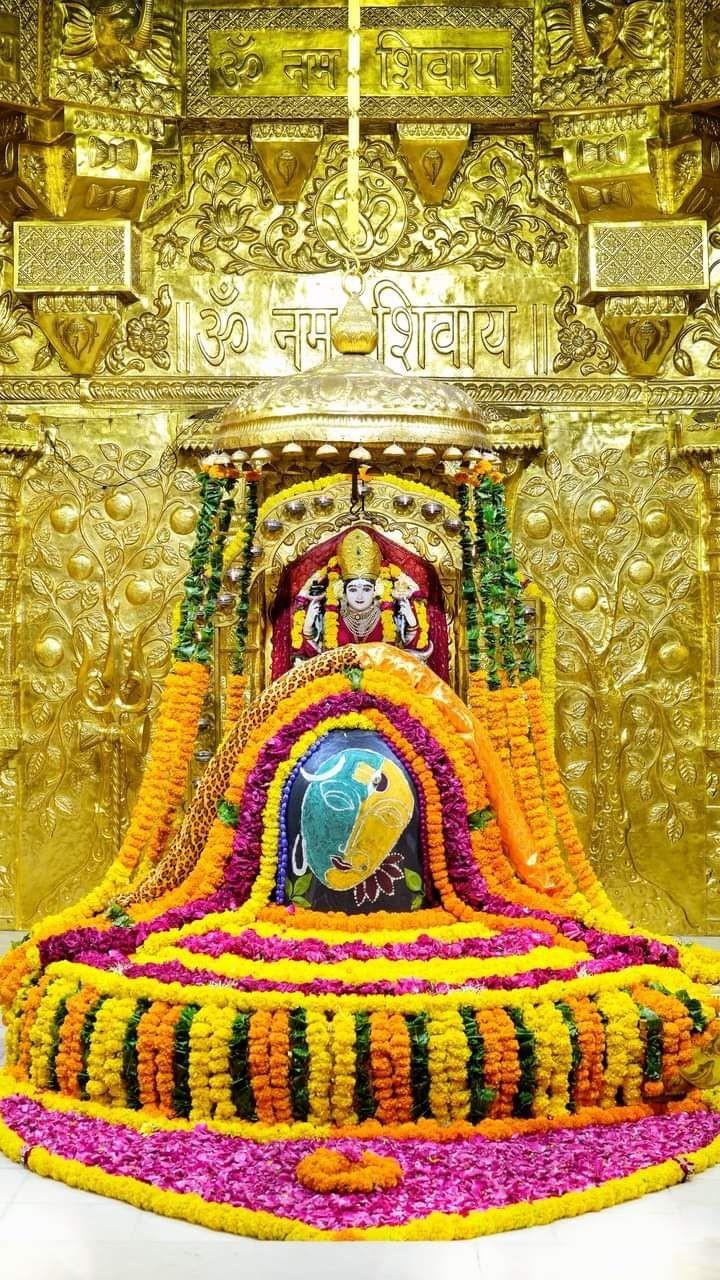Tagged: Aarti, Somnath temple
- This topic has 0 replies, 1 voice, and was last updated by .
-
AuthorPosts
-
April 11, 2024 at 12:01 am #2035Up::11

In the heart of Gujarat, India, lies a place of immense spiritual significance—the ancient Somnath Temple. This sacred shrine, dedicated to Lord Shiva, attracts millions of devotees from around the world who come to offer their prayers and participate in the Aarti ceremony. Let’s delve into the significance of the Aarti at Somnath Temple and its profound connection to Hindu God Lord Shiva.
The Importance of Somnath Temple:
Somnath Temple holds a special place in Sanatan Dharma and history. It is believed to be one of the 12 Jyotirlingas, which are sacred shrines dedicated to Lord Shiva. The temple has a rich and storied past, having been destroyed and rebuilt multiple times over the centuries. Despite facing numerous challenges, it stands as a symbol of resilience and devotion, attracting pilgrims seeking blessings and spiritual solace.
Before we delve into the significance of the Aarti ceremony, let’s learn a bit about Lord Shiva. In Hinduism, Lord Shiva is revered as one of the principal deities, known as the god of destruction and transformation. He is also considered the supreme yogi who embodies both the creative and destructive forces of the universe. Lord Shiva is often depicted with a third eye, a trident, and a crescent moon on his head.
The Ritual of Aarti:
The Aarti ceremony is a sacred ritual performed at various times throughout the day at Somnath Temple. It involves the waving of oil lamps, or diyas, before the idol of Lord Shiva, accompanied by chanting of hymns and mantras. The ceremony is conducted by trained priests who follow a prescribed set of rituals and procedures. The Aarti is a time for devotees to express their reverence and devotion to Lord Shiva and seek his blessings.
The Aarti holds profound significance in Hinduism, particularly in the worship of Lord Shiva. It is believed to be a form of divine communion, where devotees connect with the divine presence of Lord Shiva and offer their prayers and devotion. The flickering flames of the oil lamps symbolize the light of knowledge and wisdom, dispelling darkness and ignorance from the hearts and minds of worshippers.
During the Aarti ceremony, worshippers offer various items to Lord Shiva as a token of their devotion and gratitude. These offerings may include flowers, fruits, milk, honey, ghee, and sacred herbs. Each offering is made with love and sincerity, symbolizing the devotee’s dedication to the divine. The rhythmic waving of the lamps and the melodious chanting of hymns create a serene and spiritual atmosphere, inviting worshippers to immerse themselves in the divine presence of Lord Shiva.
The Aarti at Somnath Temple is also a time for devotees to seek blessings and guidance from Lord Shiva. They offer their prayers for their well-being, prosperity, and spiritual growth. The Aarti is believed to be a powerful medium through which worshippers can communicate with the divine and receive blessings for their prayers and aspirations. By participating in the Aarti with devotion and sincerity, devotees hope to strengthen their spiritual connection with Lord Shiva and experience his divine grace in their lives.
Another important aspect of the Aarti ceremony is its role in cleansing worshippers of their sins and negative energies. The light of the oil lamps is said to dispel darkness and ignorance, leading worshippers towards purity and enlightenment. By participating in the Aarti, devotees seek to purify their hearts and minds and attain spiritual liberation. It is believed that the divine presence of Lord Shiva during the Aarti ceremony has the power to cleanse worshippers of their sins and negative karma, paving the way for spiritual transformation and growth.
The Aarti at Somnath Temple is not just a religious ritual; it is also a part of India’s rich cultural and spiritual heritage. For centuries, people have been performing Aarti ceremonies as a way of expressing their devotion to the divine. The Aarti at Somnath Temple continues this tradition and serves as a symbol of India’s deep spiritual roots. It is a time-honored tradition that has been passed down from generation to generation, connecting worshippers to their ancient heritage and spiritual lineage.
In conclusion, the Aarti at Somnath Temple is a deeply significant and sacred ceremony that honors Lord Shiva with devotion and reverence. It is a time for worshippers to connect with the divine presence of Lord Shiva, offer their prayers and seek blessings. The Aarti ceremony is filled with symbolism, devotion, and spirituality, making it a deeply meaningful experience for all who participate. Through the Aarti, worshippers strengthen their spiritual connection with Lord Shiva and experience his divine grace in their lives.
Attachments:
You must be logged in to view attached files. -
AuthorPosts
- You must be logged in to reply to this topic.